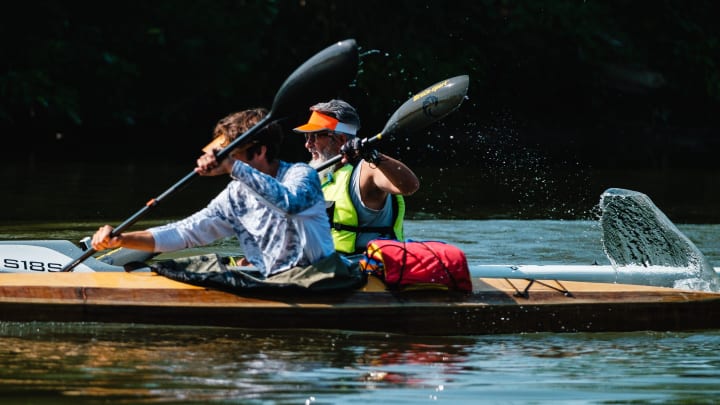Kayaking Death in Cape Hatteras National Park

According to the National Park Service, a 72-year-old man from Florence, South Carolina has lost his life in a kayaking accident.
Onlookers reported that the man launched from the beach near Cape Hatteras National Seashore's Ramp 43 which is located east of the Cape Point Campground near Buxton, North Carolina.
People watching saw the man's kayak capsize while trying to ride a wave about 50 yards from the beach. Acting as fast as possible, they swam out to help the man and pulled him from the kayak to the beach.
The NPS released that cardiopulmonary resuscitation efforts were started; however, they were unsuccessful. Several different agencies were called up during the emergency including the Dare County Emergency Medical Service, the Sheriff's Office, Hatteras Island Ocean Rescue and Cape Hatteras National Seashore Rangers.
The North Carolina Wildlife Resources Commission will be investigating the incident given that it occurred while kayaking.
The Cape Hatteras National Seashore Superintendent David Hallac sent his thoughts to the family, "We send our condolences to the kayaker's family and friends."
Of course we do not know the circumstances surrounding this incident and we absolutley do not make any assumptions. The unfortunate accident highlights the need for safety in every adventure encounter.
Here are five tips to remember when going on your next kayaking trip.
1. Wear a Personal Flotation Device (PFD)
Always wear a properly fitting PFD or life jacket. It’s the most crucial piece of safety equipment and can save your life in case of an emergency.
2. Check Weather Conditions
Before heading out, always check the weather forecast. Avoid kayaking in severe weather conditions such as thunderstorms, high winds, or strong currents. Be prepared to change your plans if the weather turns bad.
3. Know Your Limits and Skills
Choose kayaking routes that match your skill level and experience. Avoid challenging waters or difficult conditions if you’re not fully prepared. Take lessons or practice in calm waters if you’re a beginner.
4. Stay Aware of Your Surroundings
Be mindful of other boats, wildlife, and obstacles in the water. Keep an eye out for rocks, logs, and other hazards that could capsize your kayak or cause injury.
5. Carry Essential Safety Gear
In addition to your PFD, carry essential safety gear such as a whistle, a bilge pump, a paddle float, and a first aid kit. A waterproof bag with a phone, map, and compass or GPS can also be crucial in case you need help or get lost.
